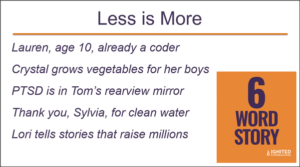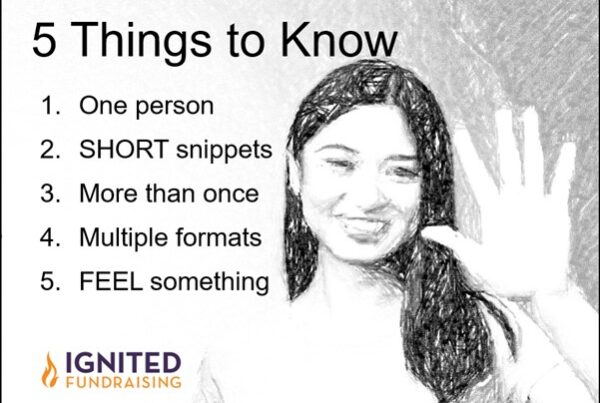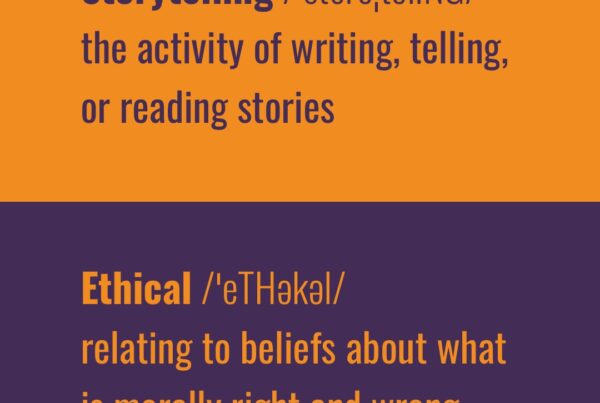With OH so many options to share stories and updates about our work, how do we create effective virtual storytelling? How do we cut through the clutter of the incredibly loud level of noise in the social sector?
Research tells us stories are more memorable than just statistics. And, science tells us everything we believe comes from stories we’ve been told by others OR we tell ourselves.
As we vie for attention in the smartphone scrolling frenzy, what makes a story, especially a story told virtually, effective?
Here’s my list of 5, feel free to add yours:
1. One person
Don’t yammer on about yourself, the years in existence, number of staff, or programs. Make your story about a single person. A volunteer, your founder, a client, a rescue pet adopter, a recipient of clean water, a student, staff, or board member. The list is endless. This leads me to #2 — keep it short.
2. SHORT snippets
Share very short snippets about the person. A photo of receiving a diploma or the face on a homebound elderly person receiving a warm meal, or a hug or the arc of the basketball as it swooshes through the basket
 Image credit: Ecumen.org Facebook
Image credit: Ecumen.org Facebook
The emphasis here is to keep your share SHORT. This can be done with a powerful photo, quote, video, or six-word story.
3. Share your story more than once
It’s rare that your community sees ALL of your social media and email postings. If you have a powerful, engaging story to share don’t just use it one time. Repost the image or the written or video version of the story in multiple places throughout the year.
An excellent practice is to provide quick updates about the person in your story throughout the year. Allow your community to get to know the hero in your story over time. Now you’re building engagement at a much deeper level and allowing your community to feel like an insider.
4. Multiple formats
Tell the story multiple ways: video, photo, quote, six-word story. Cause people to want to know more AND feel something. More on the feeling thing in #5.
Pictures don’t have to include faces. They can be an image of the back of someone or hands holding or a tiny hand holding a glass of dirty water or playing with other hands on the playground. I’m big on using images of hands. Aging hands look different than the hands of a 6-year-old. What story could a simple image tell?
By sharing in multiple formats and sharing your story more than once you are creating a familiarity with the impact of your mission.
5. FEEL something
This is THE most important component for effective virtual storytelling. If your reader or listener doesn’t feel something within a second or two they will move on. No surprise, attention spans have shortened in the past couple of years.
Think about what you want me to feel and keep your story simple so that’s exactly what your audience feels: hope, excitement, concern, curiosity, frustration, joy, entertained, you decide.
Ethical storytelling doesn’t cause anyone to feel sorry for another person. Sympathy is a distancing, judging emotion. Empathy IS what you want to cause. Empathy allows a deeper connection to another person AND your important work.
NOTE: This post is a recap of the recent web session Lori delivered at the AMAZING Nonprofit Marketing Summit 2023: The Big Innovation. The Summit is over, but all videos and slides from the more than 60 sessions are available for purchase. And no, I don’t receive any financial compensation for the sales. I just want you to know you can have access to some of the best content and speakers collected in a single place.







